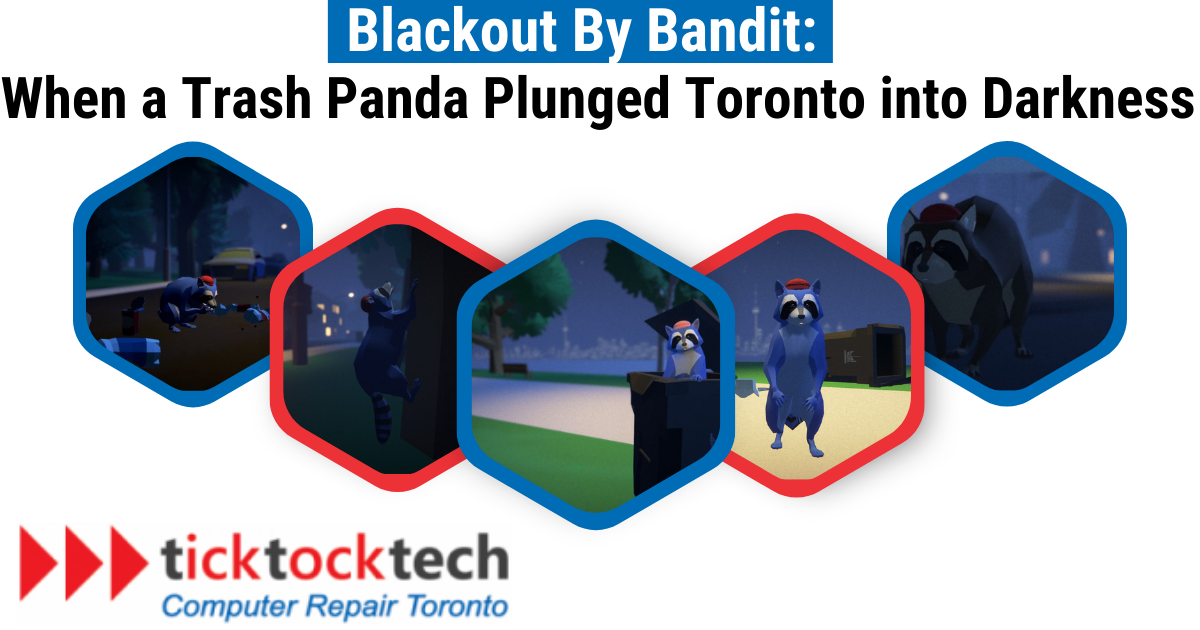Last week Thursday evening, an unexpected blackout struck the bustling downtown region of Toronto. This blackout had a significant impact on a large number of inhabitants. It brought attention to the continuous battle that exists between the people who live in the city and the famed urban animals known as raccoons. At a power station, an unpleasant situation took place when a raccoon and electrical equipment came into touch with one another. Furthermore, this not only deprived residences of electricity but also affected the water supply and subway service, trapping some inhabitants in elevators. The fact that power was restored three hours after blackout had been cut off further demonstrates the delicate relationship that Toronto has with these sentient species.
The Toronto Raccoon Chronicles
This raccoon is just as intriguing as the other people who live in cities, such as the person who stole cake, the person who lives in the metro, the person who is passionate about baseball, the person who explores airports, and the furry guest who is in the financial district. Raccoons have firmly established themselves in the metropolitan landscape of Toronto, which has resulted in a division amongst the citizens of the city.

Although there are locals who admire the raccoon’s tenacity and suggest that it could serve as the city’s mascot, there are also inhabitants who have a less positive opinion of them and advocate for their elimination. In this love-hate relationship, the complicated relationships that exist between the people who live in Toronto and the wildlife that lives there are made clear.
A Wildlife Haven in the City
Amid the bustling cityscape of Toronto, one can find a wonderful diversity of wildlife. This list includes huge Deer, skunks, and opossums, as well as someone recently spotted a beaver in the downtown region. This coexistence is a demonstration of the incredible capacity of nature to flourish in urban surroundings, even though it does not come without facing certain difficulties. Raccoons in particular have mastered the art of urban survival since they can quickly navigate around neighborhoods, deftly rummage through rubbish, and even occasionally dare to investigate the interiors of homes.
The Trash Panda Menace
For a considerable amount of time, raccoons have been a regular sight in Toronto. They are well-known for their cunning and mischievous nature. With different degrees of success, the city has been trying on methods to discourage them from accessing trash and causing mischief. These strategies have been an ongoing effort. The current power outage has brought to light a fundamental challenge: the curious nature of raccoons can lead to unforeseen consequences, such as interruptions in electrical service. This episode brings attention to the situation by shedding light on the greater issue of animals interacting with urban infrastructure.
The Raccoon Controversy
The existence of raccoons in Toronto has sparked a very contentious discussion among the city’s inhabitants. While many admire their inventiveness and urge for peaceful coexistence, there are also those who consider them to be a nuisance that poses possible risks to health and safety.

Numerous attempts to build rubbish containers that raccoons cannot enter clearly demonstrate this. It may be rather challenging to find a solution that finds a middle ground between these varied points of view. In the ongoing conversation about raccoons in Toronto, important factors about the management of wildlife in urban areas have been brought to light. These considerations also take into account the many points of view held by members of the local community.
Take Away
A Racoon recently led to a blackout in Toronto that lasted for hours. Besides restoring power, this situation requires us to engage in further discussions about wildlife roaming Toronto. Cities like Toronto must aggressively seek out innovative and environmentally friendly methods of wildlife management because they confront these issues. To achieve a harmonic balance between the requirements of people and animals, it is necessary to take a holistic strategy that includes scientific research, community participation, and effective communication. Through collaborative efforts, urban areas may work toward the goal of achieving harmonious coexistence with their wildlife equivalents, therefore acknowledging the significant contributions that these animals offer to the urban environment.
In Toronto, and having troubles with tech appliances? Call TickTockTech, and we’ll be right ther.

